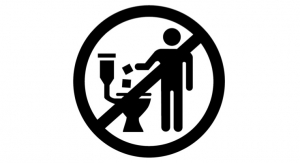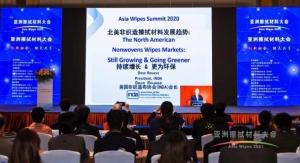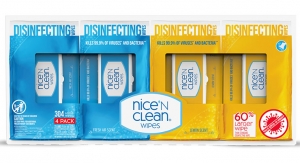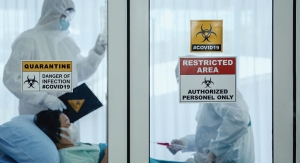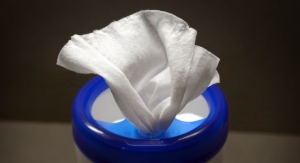Karen McIntyre, Editor09.18.17
The fight against flushability continues. As this issue goes to press, a new organization, International Water Services Flushability Group, which was formed by the stakeholders in the wastewater treatment industry, is seeking comments on a set of proposed flushabilty standards that would affect consumer products, particularly wipes.
This newfound group was formed just eight weeks ago, only a few months after its key stakeholders abandoned talks with the global wipes industry to develop similar standards. They published the standards in late July and gave the industry a few weeks to present comments before finalizing them. A few weeks under any circumstances is a small window, but when you consider those weeks are in August when most of the world is on vacation, the time period is absolutely ridiculous.
INDA, the association advancing the nonwovens industry, was working with the wastewater industry on developing a set of flushability guidelines (GD4) with better labeling standards and more stringent testing requirements; however these efforts came to a halt earlier this year when the wastewater industry wrote to INDA saying they could no longer participate.
Supposedly, the wastewater industry did not feel it had ample input into the development of the standards, but the wipes industry feels they did. The wastewater industry’s guidelines, as they read right now, would not allow any flushable wipe on the market to be labeled as flushable and the nonwovens industry says this is not something it can live with.
Analyses of sewage problems again and again show that flushable wipes—those that have been designed, marketed and labeled as being safe to flush—are not a contributor to clogs. Instead, baby wipes, which should never be flushed, paper towels and other consumer tissues products, represent the majority of the blame. INDA, and its partners, feel that by outlawing flushable wipes, the number of non flushable wipes that end up in the toilet would only increase and that would just exacerbate sewage problems.
This is an emotional situation for both sides of the fight. The wipes industry has invested millions of dollars in technology that will make wipes safe to flush; the wastewater industry is seeing millions of dollars worth of damages caused by unsafe flushing practices. Are they looking for a scapegoat in flushable wipes—even though new developments in this market are making them disperse more quickly and effectively all the time? Maybe. But by focusing on products that are not really a part of the problem, they are just making it worse. Instead, looking toward consumer education (like the Responsible Flushing Alliance) they can make sure that nothing is flushed that shouldn’t be.
As always, we appreciate your comments.
Karen McIntyre
Editor
kmcintyre@rodmanmedia.com / Twitter: @karennonwovens
This newfound group was formed just eight weeks ago, only a few months after its key stakeholders abandoned talks with the global wipes industry to develop similar standards. They published the standards in late July and gave the industry a few weeks to present comments before finalizing them. A few weeks under any circumstances is a small window, but when you consider those weeks are in August when most of the world is on vacation, the time period is absolutely ridiculous.
INDA, the association advancing the nonwovens industry, was working with the wastewater industry on developing a set of flushability guidelines (GD4) with better labeling standards and more stringent testing requirements; however these efforts came to a halt earlier this year when the wastewater industry wrote to INDA saying they could no longer participate.
Supposedly, the wastewater industry did not feel it had ample input into the development of the standards, but the wipes industry feels they did. The wastewater industry’s guidelines, as they read right now, would not allow any flushable wipe on the market to be labeled as flushable and the nonwovens industry says this is not something it can live with.
Analyses of sewage problems again and again show that flushable wipes—those that have been designed, marketed and labeled as being safe to flush—are not a contributor to clogs. Instead, baby wipes, which should never be flushed, paper towels and other consumer tissues products, represent the majority of the blame. INDA, and its partners, feel that by outlawing flushable wipes, the number of non flushable wipes that end up in the toilet would only increase and that would just exacerbate sewage problems.
This is an emotional situation for both sides of the fight. The wipes industry has invested millions of dollars in technology that will make wipes safe to flush; the wastewater industry is seeing millions of dollars worth of damages caused by unsafe flushing practices. Are they looking for a scapegoat in flushable wipes—even though new developments in this market are making them disperse more quickly and effectively all the time? Maybe. But by focusing on products that are not really a part of the problem, they are just making it worse. Instead, looking toward consumer education (like the Responsible Flushing Alliance) they can make sure that nothing is flushed that shouldn’t be.
As always, we appreciate your comments.
Karen McIntyre
Editor
kmcintyre@rodmanmedia.com / Twitter: @karennonwovens


